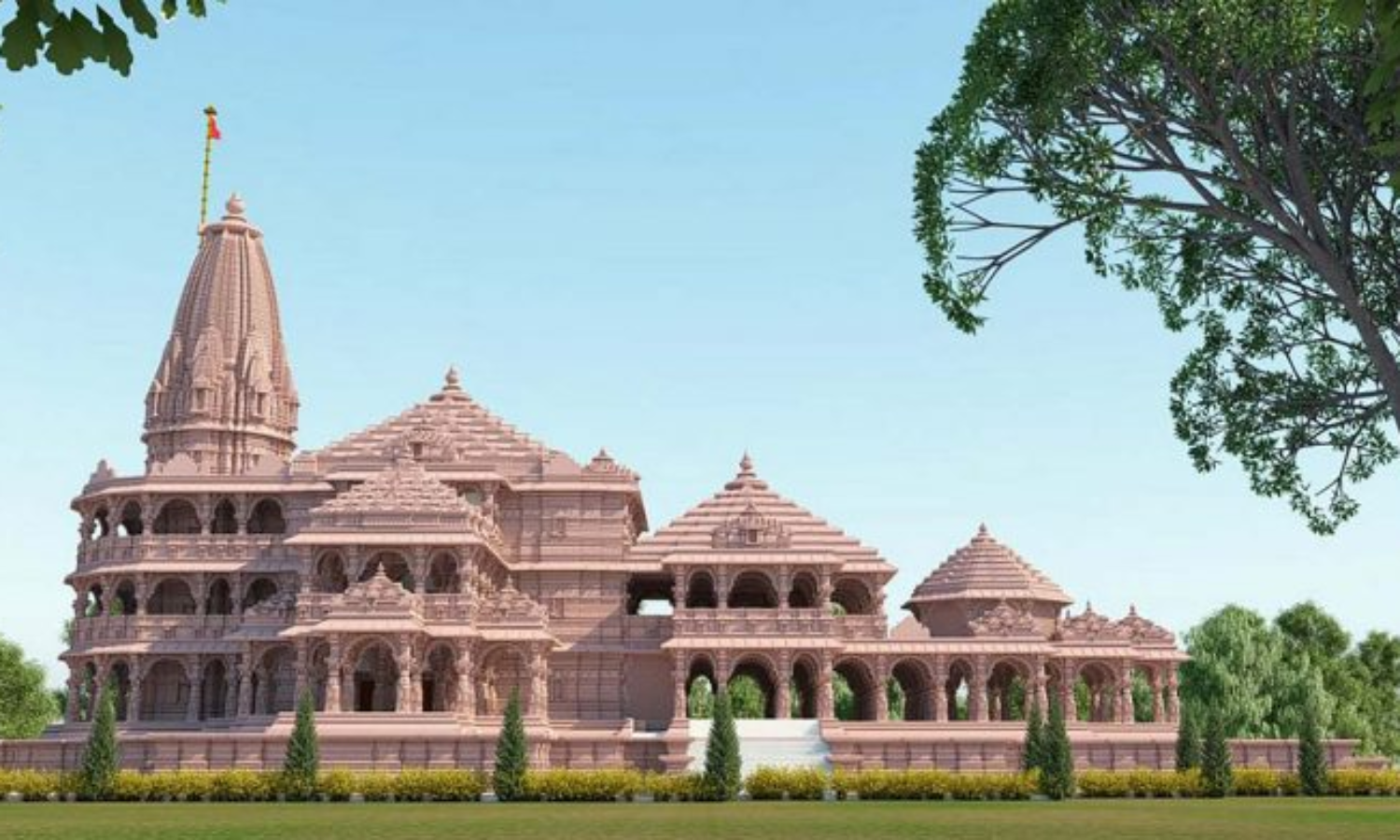
‘Ayodhya’ Birthplace of King Ram : In history ‘Ayodhya’ has been the birthplace of king Ram for thousands of years.

‘Ayodhya’ has been the city of Ram in history. Ayodhya has been witness to the continuous rise and fall of civilizations for thousands of years. This land surrounded by many ‘river rays’ of Saryu contains within itself so many references and evidences.
Many evidences of Vedic, Sanatani, Jain, Buddhist and Sikh periods have been found in the womb of Ayodhya.

Indian archaeological surveys and excavations date the history of civil civilization in Ayodhya back to the seventh century BC. Ayodhya attracted Buddha and also Mahavir. Whenever an attempt is made to string the beads of India’s history through Chinese travelers Hiuen Tsang and Fa Hien, that garland will never be complete without Ayodhya. Ayodhya has accepted everyone.
Every religion and sect has a connection with Ayodhya. Ayodhya is mentioned in Atharva Veda and Skandapuran. Both Ayodhya and Kosala are mentioned in ancient literature. Ayodhya has been given the first place among the seven ‘cities of salvation’ – Mathura, Kashi, Maya, Kanchi, Avantika, Dwarvati.
Ayodhya is mentioned in Mahabharata and Ramayana.
Kalidas has used Ayodhya and Saket in the same meaning in Raghuvansh. In Chinese sources it is written as ‘A-Yu-J-Ayuj’ or Awadh. Chinese traveler Hiuen Tsang has called it ‘Picosia’. According to him, its circumference was 16 li (one Chinese ‘li’ is equal to 1/6 of a mile). In Ain-e-Akbari, the length of this city has been stated as 148 kos and width as 32 kos.
The first Tirthankar of Jainism ‘Rishabhdev’ was the child of King Nabhiraj of Ayodhya and his wife Marudevi. He considered himself to be in the lineage of Ram. Five Tirthankaras of Jain sect have been related to Ayodhya.

Jain Tirthankaras Ajitnath, Abhinandannath, Sumatinath and Anantnath were also born in Ayodhya. All of them were from the Ikshvaku dynasty, the lineage of Lord Rama. Lord Buddha’s family also associated itself with the tradition of Rama. Buddha spent a long time of his life, about sixteen years, in Ayodhya. The first king whom Buddha initiated was King ‘Prasenjit’ of Ayodhya.
Sikhism also has a deep connection with Ayodhya. Guru Nanakdevji visited Ayodhya in 1510-11 AD. He had come to Ayodhya to visit Ramjanmabhoomi. Not only Guru Nanakdevji but Guru Tegbahadur ji and his son Guru Gobind Singh ji also visited Ayodhya. In the subsequent period, the Nihangs who came to liberate Ram’s birthplace associated themselves with Ram’s lineage.

The proof of how close the relationship of Sikhism has been with Ayodhya is the book ‘Pothi Janam Sakhi’ by Bhai Mani Singh, a direct disciple of Guru Gobind Singh Ji. This book was published from Mustafai Press, Lahore in 1890. In this book, Bhai Mani Singh writes that – “Just as God incarnated in all four Yugas, similarly Lord Ram incarnated in Treta, to protect the dignity of religion.
” The description of the four eras in the background of the Sikh sect is noteworthy. Bhai Mani Singh further writes – “Vishnu devotion is disappearing in the world because of Muslims. Due to this, a request was made to God for salvation. Then Maharaj meditated and the form of Guru Nanak Ji was revealed.” That is, to fight this crisis, Guru Nanak Devji was born in India. In this book, there is mention of Guru Nanak Devji’s visit to Ayodhya and visit to Ramjanmabhoomi.

From Brahmaghat pilgrimage, he reached Ayodhya in a boat. (Page 213) Seeing the condition of Ram’s birthplace, Guru Nanak Dev also said that – “Brother Mardana, this tenth incarnation will destroy the Malechha of Dhar.” That is, in time, he will end those Malechchas by becoming a weapon wielder in the form of the tenth Guru Guru Gobind Singhji. (Page 265) Sikhs from every corner of the world come to visit the Gurudwara Brahmakund of Ayodhya. The first Guru of Sikhism, Guru Nanak Dev, the ninth Guru Tegh Bahadur and the tenth Guru Guru Gobind Singhji meditated in Brahmakund. According to the legend, Brahma once performed penance here. For this reason it was named ‘Brahmakund’.
Guru Gobind Singhji, while going from Patna Sahib to Anandpur, had stopped here and had darshan of Ram Lalla. The story also goes that to protect the birthplace of Ram, Guru Gobind Singh’s Nihang army had fought hard with the royal army of the Mughals. At that time Delhi was ruled by Aurangzeb.

Ayodhya belongs to everyone. People of many religious sects came here. Devotion towards Ram kept drawing everyone here. Dalit saint Ravidas also came to Ayodhya from Banaras. Saint Ravidas met Gurunanak Devji in Ayodhya itself. In the book “The Life and Works of Raidas” by Winand M.
Callewaert, Peter G. Friedlander, it is mentioned that Ravidas was one of the devotees whom Guru Nanak Devji met in Ayodhya. Saint Ravidas was a devotee poet of the medieval period. Established ‘Ravidasia sect’. This great saint, who was a shoe stitcher by profession in Kashi, had shown the path of enlightenment. Some of his hymns are compiled in Guru Granth Sahib. Ravidasji, who was against idol worship, also had faith in Ram. He writes – “Ravidas is our So Ram, the whole life remained full.
In search of Advaita, Acharya Shankar had also reached Ayodhya from Kaladi in Kerala. Adi Shankaracharya along with his followers had come to Ayodhya on foot from Naimisharanya. There he visited Ramjanmabhoomi temple, Nageshwarnath temple and some other He also visited temples.
There are also references to this that he stayed in a Shiv temple near Swargadwar. Adi Shankaracharya stayed in Ayodhya for five days. Ramanujacharya, the originator of Vishishtadvaita sect, also stayed in Ayodhya for three nights while returning from Badarika Ashram. from they







